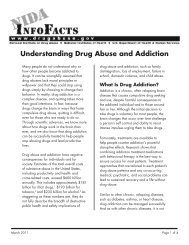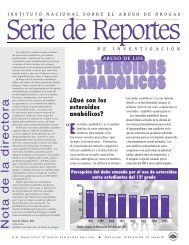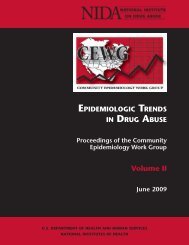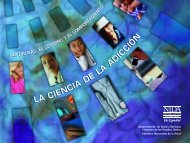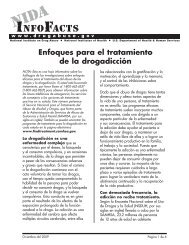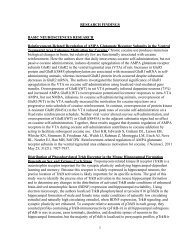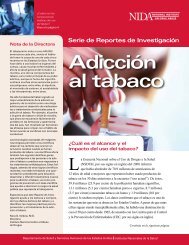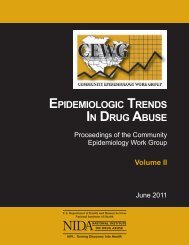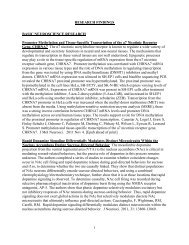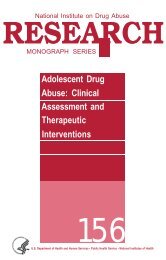Neurotransmission Fact Sheet
Neurotransmission Fact Sheet
Neurotransmission Fact Sheet
- No tags were found...
You also want an ePaper? Increase the reach of your titles
YUMPU automatically turns print PDFs into web optimized ePapers that Google loves.
Heroin and Cocaine <strong>Fact</strong> <strong>Sheet</strong>HEROINChanges in the brain are responsible for heroin addiction. Using heroin activates the brain’s opiatereceptors and increases the amount of dopamine released, which results in a short-lived rush. Byacting on the opiate receptors, users can experience feelings of euphoria and decreased pain. Userscan also experience nausea and cloudy thinking. After repeated use, receptors decrease and heroinusers need more and more of the drug just to feel the same effects, or to avoid withdrawal symptoms.Withdrawal symptoms are intense for a heroin addict, and include insomnia, muscle and bone pain,vomiting, and cold flashes.Word Bank: opiate, addiction, rush, withdrawal, receptorsCOCAINECocaine prevents the normal reabsorption of dopamine during neurotransmission. This causes a buildupof dopamine in the synapse, which gives a cocaine-user strong feelings of pleasure. When a personstops using cocaine, dopamine levels decrease and the person needs more of the drug to restore thedopamine level and to feel normal again. Repeated cocaine use can cause damage to neurons andlead to problems with memory and learning. Cocaine withdrawal can lead to feelings of depression,anxiety, and paranoia.Word Bank: dopamine, memory, reabsorption, depression, synapseTeacher Copy: Module 5



